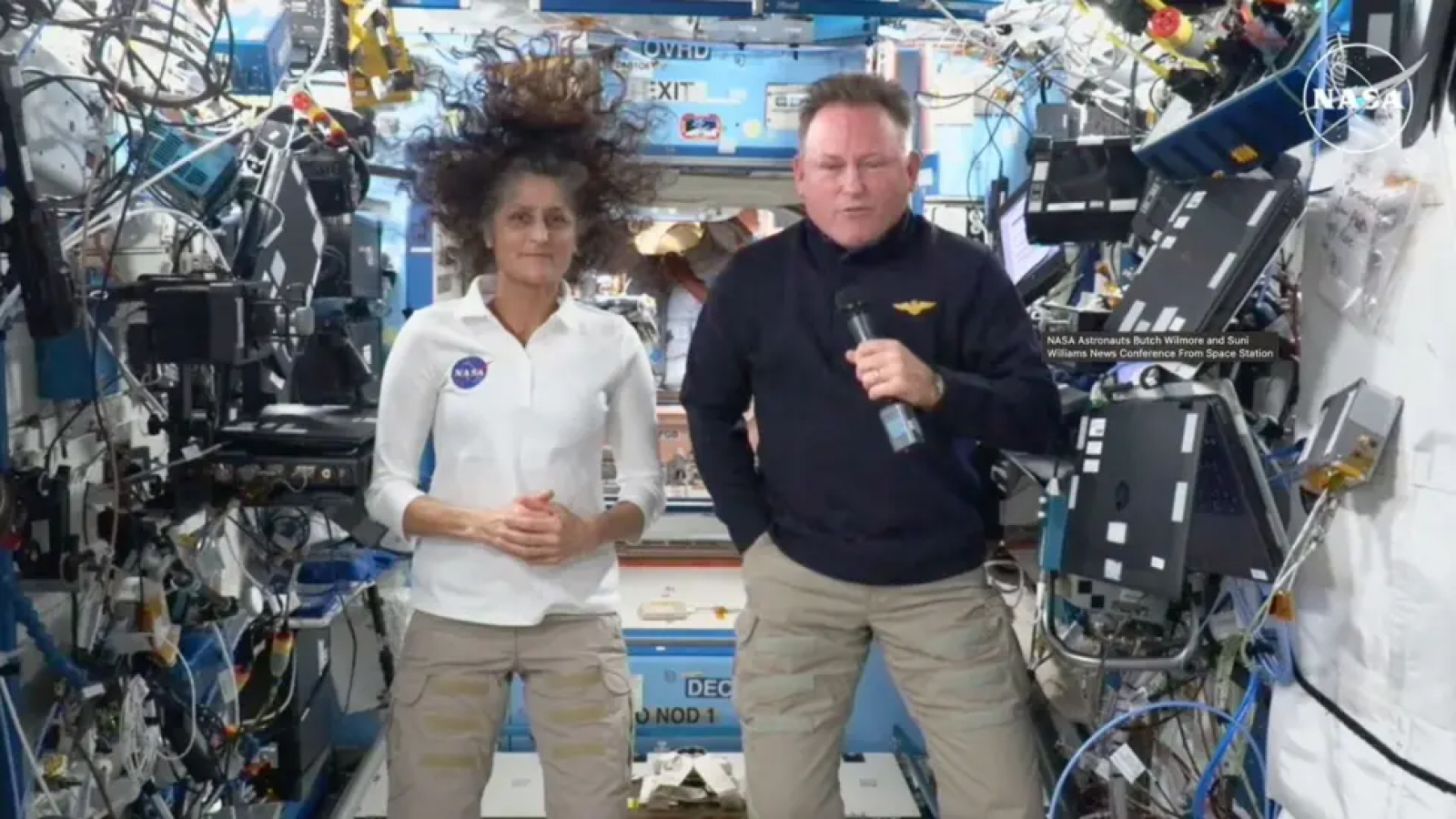
Boeing’s Starliner astronauts are in the final stretch of their unexpectedly long stint in Earth orbit — and they’re setting the record straight on all the “stranded astronauts” talk.
NASA’s Suni Williams and Butch Wilmore launched to the International Space Station (ISS) last June on the first crewed test flight of Boeing’s Starliner spacecraft. The duo expected their orbital stay to last about 10 days, but Starliner experienced thruster malfunctions during its approach and docking maneuvers. This led to an extensive investigation by NASA and Boeing back on the ground, while the space agency decided how to proceed.
Ultimately, Starliner returned to Earth uncrewed and, after some astronaut assignment shuffling, Williams and Wilmore were added to the downward leg of SpaceX‘s Crew-9 mission, which arrived at the ISS in late September. Absorbing Williams and Wilmore into Crew-9 meant extending their time in space through the arrival of Crew-10, at the end of Crew-9’s six-month rotation.
Since then, headlines lamenting the woes of the “stranded astronauts” have ebbed in and out of media cycles. All the while, Williams and Wilmore have continued performing their regular duties aboard the ISS — including Williams breaking the record for most cumulative spacewalking time by a woman.
Related: NASA moves up return date for Boeing Starliner astronauts after swapping SpaceX Dragon spacecraft
The pair’s situation gained even more attention recently, after President Donald Trump blamed the Biden administration for “virtually abandon[ing[” the two astronauts and publicly called on SpaceX CEO and close Trump advisor Elon Musk to come to their rescue.
In December, NASA announced a delay to the launch of Crew-10 to no earlier than “late March,” due to the need to complete work on a new Dragon spacecraft being built for the mission. This delay further pushed back the return of Williams and Wilmore, who will fly home with the two astronauts who launched on the Crew-9 Dragon, NASA’s Nick Hague and cosmonaut Aleksandr Gorbunov.
More delays in the manufacture of Crew-10’s new Dragon have now prompted NASA to swap that mission’s spacecraft for one that can be made ready sooner. The announcement came two weeks after the social media exchange between President Trump and Musk, who echoed the President’s misleading “stranded astronauts” rhetoric. And Williams and Wilmore hope that rhetoric will change.
In a recent conversation with CNN’s Anderson Cooper, the two explained that sometimes mission extensions (even ones that push a space stay from 10 days to 10 months) are just part of the job.
“We come prepared, we come committed. That is what your human spaceflight program is: It prepares for any and all contingencies that we can conceive of, and we prepare for those,” Wilmore told Cooper. “We don’t feel abandoned. We don’t feel stuck. We don’t feel stranded.”
In fact, Wilmore pointed out, all the astronauts aboard the ISS are capable of returning to Earth immediately, in the event of an emergency. “We would never expect to come back, just special for us or anyone, unless it was a medical issue or something really, really out of the [normal] circumstances,” he said.
“Help us change the rhetoric,” Wilmore asked Cooper. “Let’s change it to ‘prepared and committed.'”
Both astronauts have lived aboard the ISS for extended periods on previous missions, and both say that they’re enjoying their time in space on this one.
“It is just amazing how, when you come across the hatch after you’ve been here, it’s like, ‘Oh, my gosh! I remember what this is all like! I remember feeling what it’s like floating!’ And I think both of us adapted really quickly,” Williams said during the CNN interview.
She also said that the end of their current spaceflight will be an emotional one: “I think both of us will be a little bit sad when that feeling of space sort of leaves us.”
NASA is currently targeting no earlier than March 12 for the launch of the Crew-10 mission, which will fly the Crew Dragon capsule Endurance rather than SpaceX’s new Dragon. A typical crew overlap aboard the space station lasts about a week, so Wilmore said he expects Crew-9 to depart for Earth around March 19.
Originally posted on Space.com.
Human spaceflight quiz: How well do you know our journey into space?
